December 1, 2023
The tourists are rather overwhelming in Kyoto at present, and the reason is Momiji-gari. Momiji-gari literally means “hunting red leaves’. It derives from momiji (red leaves or maple tree) and kari (hunting).
I visited three major temples today, and once you realize there is nothing you can do with the teems of people and that this is not a time to visit the temple to see it, but a time to visit the temple to view the changing of the colors, you can sort of just go with the flow. Sort of being the operative word, it is impossible to describe how many people are here for Momiji-gari.
Nanzenji
The first temple on my list today was Nanzenji. Nanzenji is one of the most important Zen Buddhist temples in all of Japan. The history of Nanzenji dates back to the mid-13th century when the Emperor Kameyama built his retirement villa at the temple’s present location and later converted it into a Zen temple. All of the buildings were destroyed during the civil wars of the late Muromachi Period (1333-1573)—the oldest of the buildings that stand today dates to after the war.
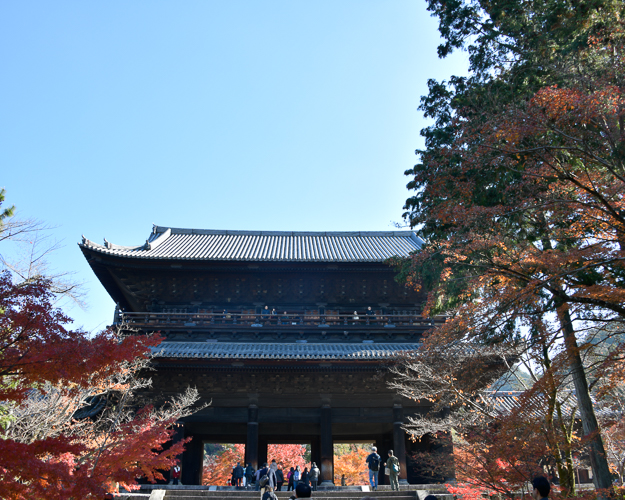
Your first encounter is the massive Sanmon entrance gate. The gate was constructed in 1628 by the ruling Tokugawa clan for soldiers who died in the siege of Osaka Castle in 1615.
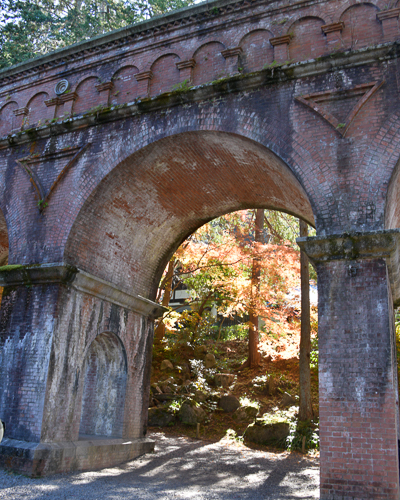
Oddly running through a portion of the grounds is a large brick aqueduct that goes by the name Suirokaku Water Bridge and is part of the Lake Biwa Canal. The Canal was built in the late 1800s during the early part of the Meiji period. The purpose of the Lake Biwa Canal was to help in Kyoto’s development by moving water from the lake to the city. The waterway was used for drinking water, power generators, and transportation. Today, the water from the canal is used for general water supply and firefighting.
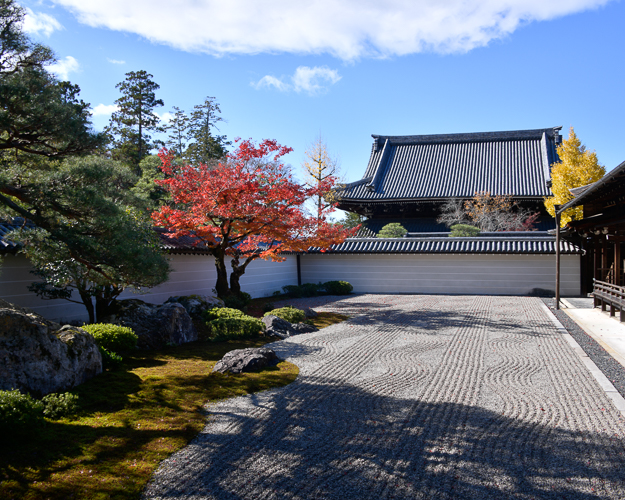
The Tenjuan Temple is a small sub-temple dedicated to the Zen master who served Emperor Kameyama in his religious studies. Dating to the 17th century, it is noted for karesansui (dry garden). The garden was named Toranokowatashi (young dragons crossing the water) after the shape of the rocks. This garden is said to have been designed by a renowned landscape architect, Kobori Enshu, around 1600.
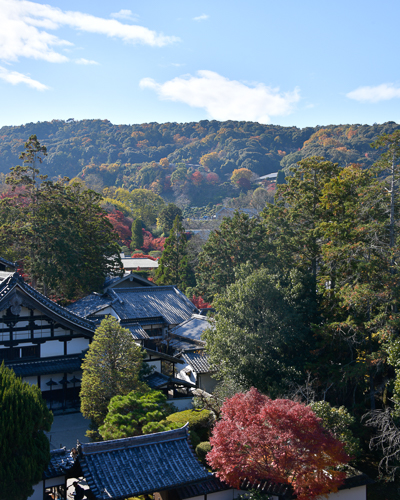
Standing on the second floor of the Sanmon, looking down on one of the many sub-temples.
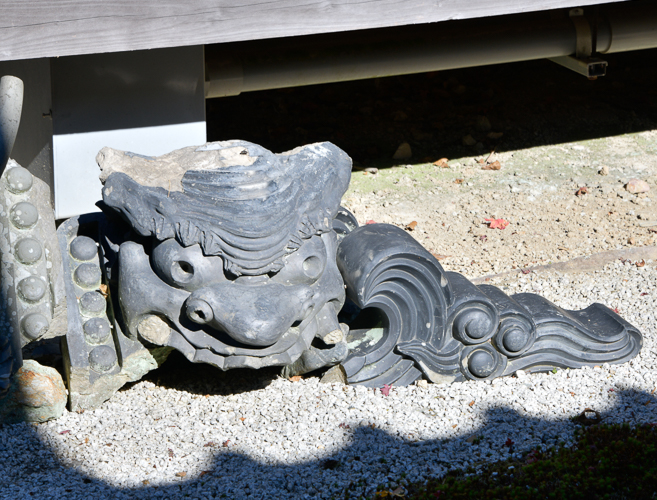
A piece of broken pottery on the ground near the rock garden
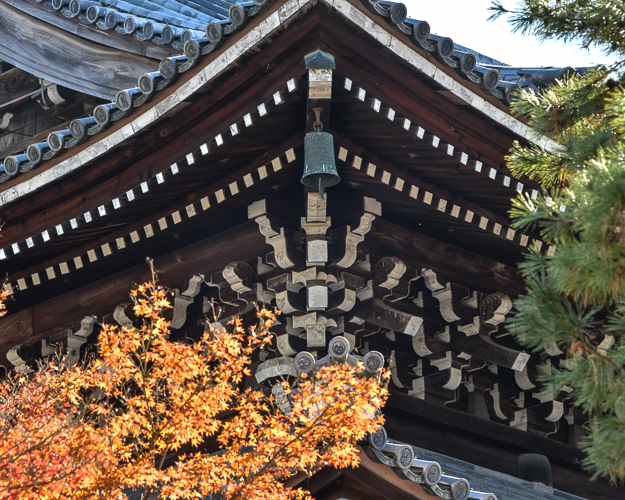
I have always loved the woodwork under the eaves of Japanese temples
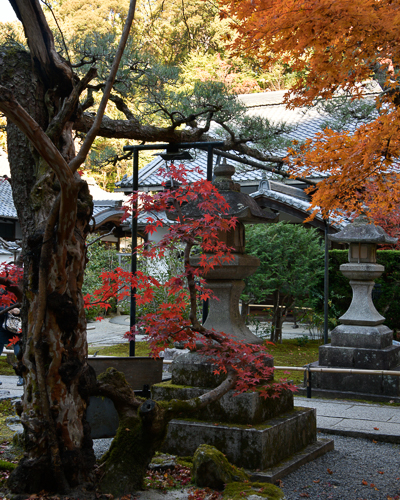
*
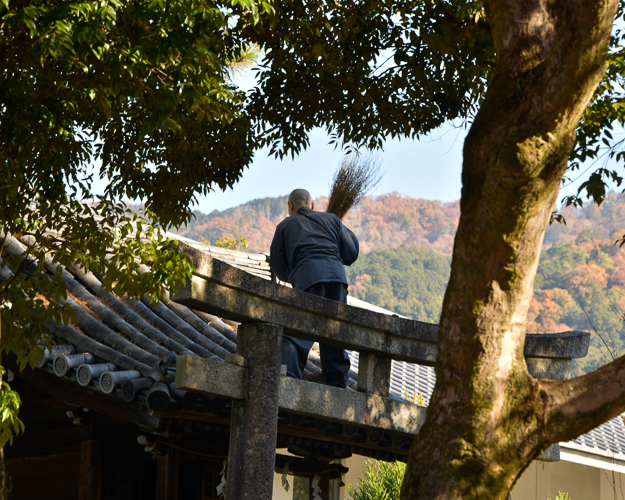
A gentleman sweeping leaves off the roof of a building at the approach to Nanzenji Temple